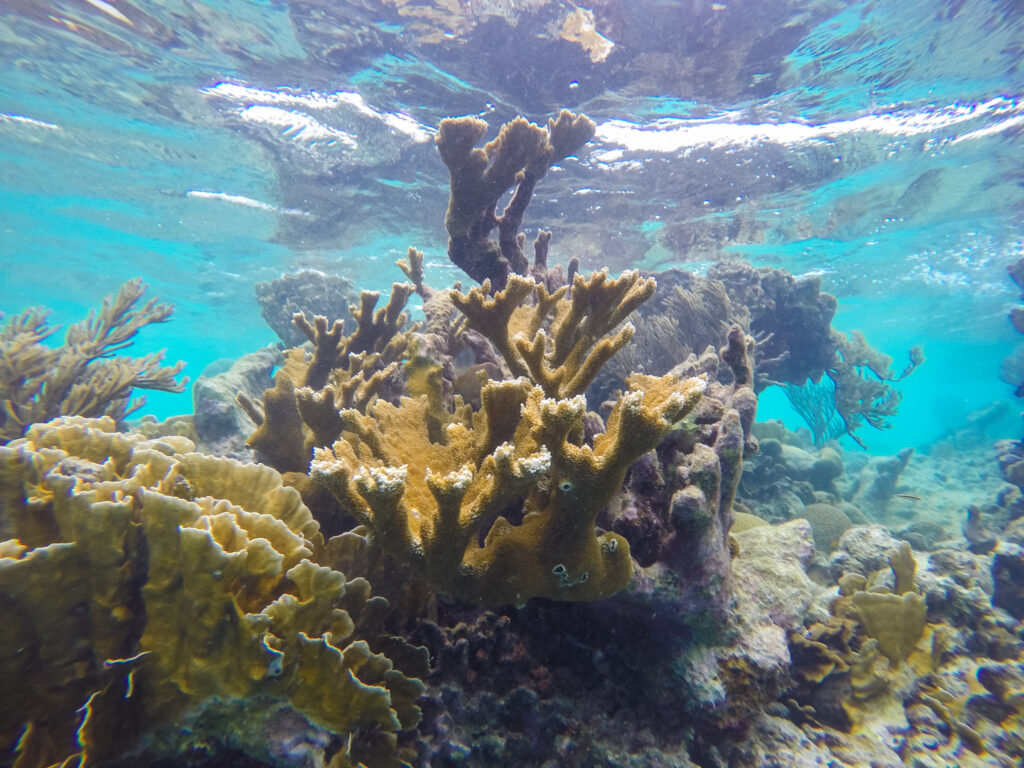
Coral reefs around the world have been suffering from warming seas and increasing acidification, both a result of human activity. In the Caribbean, a new threat has emerged in the form of invasive algae.
New research published in Scientific Reports explains how an aggressive, crust-like alga is overgrowing shallow reefs and taking the place of coral that was damaged by powerful storms that exposed areas of the undersea rock where corals grew.
Researchers from Oxford University, the Carnegie Institution, and California State University Northridge have been studying these peyssonnelid algal crusts, or PACs, for several years in the U.S. Virgin Islands. The PAC has been out-competing coral larvae for surface space and then growing over the existing reef architecture, greatly damaging delicate reef ecosystems.
New corals actually prefer to settle on crusty surfaces created by a different type of algae called crustose algae, or CCA. CCA acts as guideposts for coral larvae by producing biochemical signals as part of a microbial community that entice baby coral to affix itself.
In contrast, the destructive PAC algae exclude coral settlement. The researchers determined that the microbial community associated with PAC algae is deployed to deter grazing from fish and other marine creatures. Unfortunately, it also deters coral.
Fragile coral ecosystems are already under assault by environmental pollution and global warming. Now, in the aftermath of powerful hurricanes like Irma and Maria, algal crusts are taking over reef communities and posing an existential threat to Caribbean corals.
*********
Web Links
Photo, posted January 11, 2015, courtesy of Falco Ermert via Flickr.
Earth Wise is a production of WAMC Northeast Public Radio.
Leave a Reply